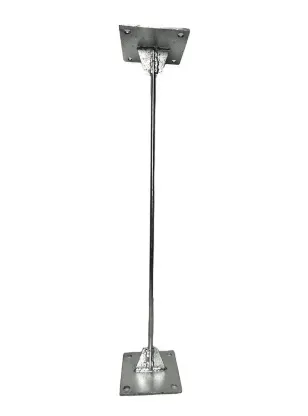loading...
- No. 9, Xingyuan South Street, Dongwaihuan Road, Zaoqiang County, Hengshui, Hebei, China
- admin@zjcomposites.com
- +86 15097380338
- Welcome to visit our website!
Current Pricing Trends for GFRP Bars in the Reinforcement Market
The Rising Cost of GFRP Bars An In-Depth Look at Pricing Trends
Glass Fiber Reinforced Polymer (GFRP) bars have emerged as a highly sought-after alternative to traditional steel reinforcement in concrete structures. Their corrosion resistance, low weight, and high tensile strength make them ideal for various applications, particularly in environments prone to corrosion, such as marine structures, bridges, and parking garages. However, one pressing concern for engineers, contractors, and project managers is the price of GFRP bars and the factors influencing their costs.
Understanding GFRP Bar Pricing
GFRP bars are manufactured using a composite material consisting of glass fibers and a polymer matrix, typically epoxy. The production process involves layering glass fibers and impregnating them with resin, followed by curing to achieve the desired strength and durability. While this method leads to a superior end product, the complexity of production directly impacts pricing.
As of the latest data in 2023, the average price of GFRP bars can vary significantly based on several factors, including bar diameter, length, and the type of resin used. Prices typically range from $2.50 to $6.00 per linear foot, with smaller diameters being less expensive than larger ones. Customization options and specialized requirements can further increase costs. Compared to traditional steel rebar, which can range from $0.30 to $1.00 per linear foot, GFRP bars are considerably more expensive upfront. However, it’s crucial to consider the total lifecycle costs, which can make GFRP a more economic choice over time.
Factors Influencing Prices
1. Raw Material Costs The primary components of GFRP, glass fibers, and resins, are subject to market fluctuations. The price of raw materials can vary based on global supply chains, production capacities, and demand levels. Any increase in the cost of these materials can lead to a rise in GFRP bar prices.
2. Manufacturing Process The methods used in producing GFRP bars are more labor-intensive compared to steel rebar manufacturing. This complexity leads to higher production costs, which are then passed on to consumers. Innovations in manufacturing techniques may help reduce costs in the long run, but as of now, these processes can limit the affordability of GFRP products.
gfrp bars price

3. Market Demand As awareness of the benefits of GFRP bars grows, demand has been on the rise. Increased projects utilizing GFRP materials can lead to higher costs, especially if production does not scale accordingly. Conversely, economic downturns can reduce demand, leading to price stabilization.
4. Competition with Traditional Materials GFRP bars are often viewed as a premium product. In competitive markets, manufacturers may adjust their prices to attract consumers while balancing profitability. However, as sustainability becomes increasingly important in construction, more projects may turn to GFRP, enhancing its market position.
5. Regulatory Standards Compliance with construction codes and standards can affect pricing. Manufacturers often need to invest in testing and certification processes to ensure their products meet safety and performance standards. These costs are usually factored into the final price.
The Value Proposition
While the initial costs of GFRP bars may be higher than steel, the long-term benefits can outweigh these expenses. Their resistance to corrosion significantly reduces maintenance costs, which can be a significant part of a structure's lifecycle. Additionally, GFRP bars can lead to reductions in construction time due to their lightweight nature, making them easier to handle and install.
Moreover, the use of GFRP bars can contribute to sustainability goals. Their longevity and reduced need for repairs can lead to lower resource consumption over the lifespan of structures. As society moves towards more sustainable building practices, the demand for GFRP materials is expected to continue growing.
Conclusion
In summary, while GFRP bars currently come with a higher price tag compared to traditional steel reinforcement, their unique properties and benefits make them an attractive option for many construction projects. As technology advances and manufacturing processes become more efficient, the price of GFRP bars is likely to become more competitive. For stakeholders in the construction industry, understanding the factors influencing GFRP pricing and considering the long-term value will be essential in making informed material choices for future projects.
-
The Rise of FRP Profiles: Strong, Lightweight, and Built to LastNewsJul.14,2025
-
SMC Panel Tanks: A Modern Water Storage Solution for All EnvironmentsNewsJul.14,2025
-
GRP Grating: A Modern Solution for Safe and Durable Access SystemsNewsJul.14,2025
-
Galvanized Steel Water Tanks: Durable, Reliable, and Ready for UseNewsJul.14,2025
-
FRP Mini Mesh Grating: The Safer, Smarter Flooring SolutionNewsJul.14,2025
-
Exploring FRP Vessels: Durable Solutions for Modern Fluid HandlingNewsJul.14,2025
-
GRP Structures: The Future of Lightweight, High-Performance EngineeringNewsJun.20,2025
